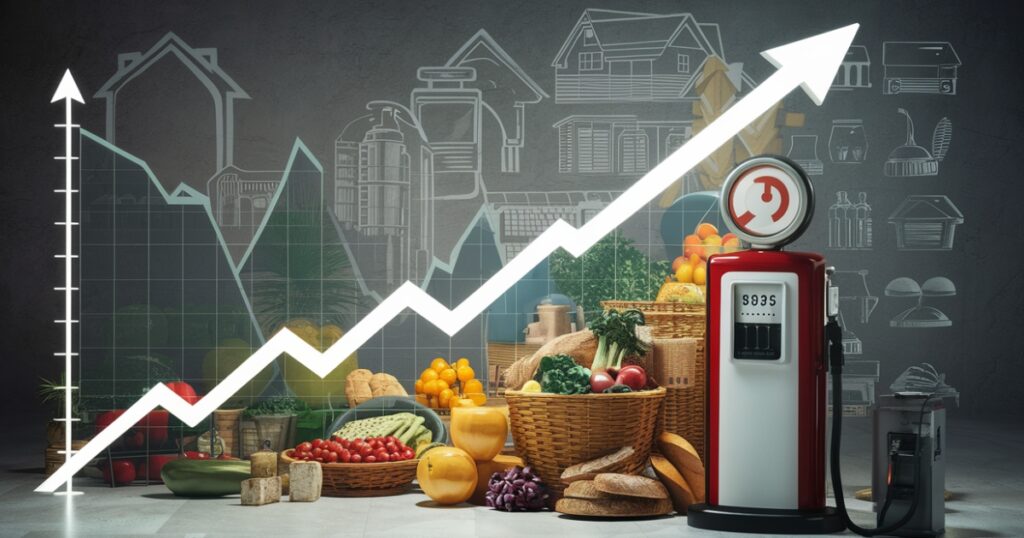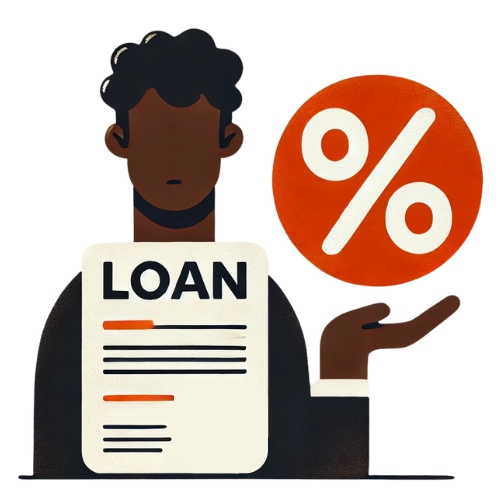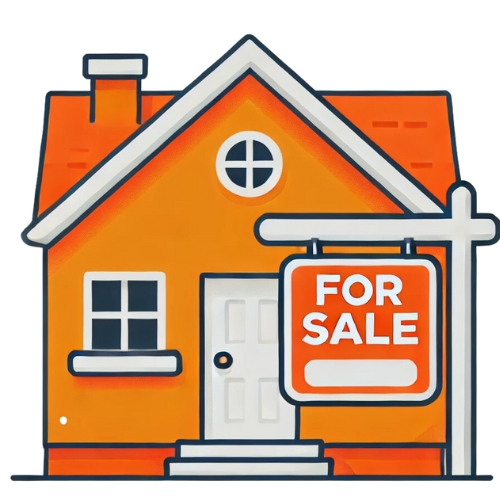
When the South African Reserve Bank (SARB) announces an increase in the repo rate, it signals a shift in monetary policy that impacts everyone from homeowners to investors. This rate, the benchmark interest rate at which the SARB lends money to commercial banks, influences various economic activities by determining the cost of borrowing. As the repo rate climbs, so too does the interest rate on loans and mortgages, potentially cooling off consumer spending and slowing down economic growth. But what does this mean for the average consumer and business owner in South Africa?
Key Takeaways
- Higher Borrowing Costs: An increase in the repo rate raises interest rates on loans and mortgages, making borrowing more expensive and increasing monthly repayments.
- Reduced Consumer Spending: Higher borrowing costs can reduce disposable income, leading to decreased spending on non-essential items and potentially slowing economic growth.
- Better Savings Returns: Increased repo rates boost interest rates on savings accounts and fixed deposits, providing higher returns for savers and encouraging more saving.
About Arcadia Finance
Get your loan easily with Arcadia Finance. Choose from 19 reputable lenders with no application fees, all compliant with South Africa’s National Credit Regulator. Enjoy a simple process and trusted options for your financial needs.
What is the Repo Rate?
The repo rate, determined by the Reserve Bank’s Monetary Policy Committee, serves as the foundational rate at which the central bank lends to commercial banks within the country. This rate is strategically modified to maintain inflation within the target range of 3% to 6%.
Elevating the repo rate generally makes borrowing less appealing. This strategy decreases the money circulating in the economy, leading to reduced spending. With the slowdown in expenditure, it becomes more challenging to hike prices, effectively helping to control inflation.
SAnews, the official South African government news agency, provides detailed coverage on repo rate changes as announced by the South African Reserve Bank (SARB).

How Does the Repo Rate Impact You?
The repo rate, set by the South African Reserve Bank (SARB), is the cost at which it provides funds to commercial banks. This critical financial lever is adjusted by the SARB’s Monetary Policy Committee to help maintain inflation within a predefined threshold.
What Does an Increase in the Repo Rate Mean for You?

Effects on Borrowing Costs
When the repo rate increases, borrowing costs for both individuals and businesses rise. Banks typically pass on the higher costs of borrowing to their customers by increasing interest rates on loans and mortgages. Homebuyers and those with variable-rate mortgages will see their monthly repayments increase, making it more expensive to finance property purchases. Similarly, personal loans, car loans, and other forms of credit will also become more costly. Credit card interest rates, which are often linked to the repo rate, will also rise. This means carrying a balance on credit cards will become more expensive, leading to higher monthly payments for consumers.

Influence on Consumer Spending
An increase in the repo rate can significantly influence consumer spending patterns. With higher borrowing costs, individuals and families may have less disposable income. This can lead to reduced spending on non-essential goods and services as more income is directed towards servicing debt. Consumers might delay major purchases, such as buying a home or a car, due to higher financing costs. Additionally, there may be a shift towards saving rather than spending, as higher interest rates make savings accounts more attractive.

Impact on Savings
Higher repo rates can positively impact savers. Banks typically increase the interest rates on savings accounts and fixed deposits following a hike in the repo rate. This provides savers with higher returns on their deposits. Individuals who invest in fixed deposits or other interest-bearing instruments can benefit from the increased rates, leading to better returns on their investments.

Effects on Inflation
Central banks often increase the repo rate as a tool to manage inflation. By making borrowing more expensive and encouraging saving, higher repo rates can reduce the amount of money circulating in the economy, helping to control inflation. In the short term, higher rates can slow down inflation by curbing consumer spending and investment. However, the long-term impact depends on various factors, including how businesses and consumers adapt to the new rate environment.

Influence on the Housing Market
The housing market is particularly sensitive to changes in the repo rate. An increase in the repo rate leads to higher mortgage interest rates, making home loans more expensive and reducing the affordability of buying a house. Higher mortgage costs can dampen demand for property, potentially leading to a slowdown in the housing market. This can affect property prices and the overall real estate sector.
Choosing the right bank can significantly influence how you experience changes in repo rates. Find out which institution stands out as the best bank in South Africa, offering competitive interest rates and customer-friendly policies, to help you navigate through economic changes more smoothly.
What Does a Decrease in the Repo Rate Mean for You?
When the repo rate drops, it sets off a chain reaction throughout the economy, influencing personal finances and the wider economic environment.
Lower Borrowing Costs
When the central bank lowers this rate, commercial banks typically follow by reducing their interest rates on loans and mortgages. This results in cheaper access to credit for individuals. If you’re considering a home loan, car finance, or a personal loan, you’ll likely find more favorable interest rates. This can make large purchases more affordable and increase your disposable income, as less money is spent on interest payments.
Increased Spending Power
With lower interest rates, consumers often feel more financially stable and are more inclined to spend. This increased spending can stimulate economic growth as businesses experience higher demand for their products and services. For you, this might translate to better job security and potential wage increases as companies expand and hire more staff to meet rising demand.
Mortgage Repayments
If you have an existing mortgage with a variable interest rate, a decrease in the repo rate can significantly lower your monthly repayments. This can free up additional funds each month, allowing you to either pay off your mortgage faster or redirect those funds towards other financial goals, such as saving for retirement or funding education.
Savings Rates and Investments
While lower borrowing costs are beneficial for those with debt, they can be less advantageous for savers. A decrease in the repo rate often leads to lower interest rates on savings accounts, resulting in reduced returns on savings. However, it might encourage you to explore other investment opportunities, such as stocks, bonds, or real estate, which could offer higher returns in a low-interest-rate environment.
Impact on the Housing Market
Lower interest rates generally make borrowing cheaper, which can boost the housing market. With more affordable mortgage rates, demand for property may increase, potentially driving up home prices. If you’re a homeowner, this could mean an increase in the value of your property. For prospective buyers, it might mean more competition in the market but also more accessible financing options.
Business and Employment
Businesses benefit from lower interest rates as it reduces the cost of financing for expansion and operations. This can lead to increased investment in infrastructure, technology, and workforce, boosting economic growth and creating job opportunities. If you’re in the job market, you might find more openings and potentially better salaries as businesses look to attract and retain talent.

How to Prepare for Repo Rate Increases
The repo rate is the interest rate at which commercial banks borrow from the central bank. When it rises, your finances can be impacted. Preparing for these increases is important for maintaining financial stability. Here are some steps to help you prepare:
Review Your Budget
Start by reviewing your budget to understand your current financial situation. Identify your income, expenses, and any existing debts. Knowing where your money is going each month will help you find areas where you can cut back if necessary. It’s important to create a buffer in your budget to accommodate potential increases in loan repayments and other interest-related expenses.
Pay Down Debt
Interest rate hikes can increase the cost of servicing debt, particularly if you have variable-rate loans or credit card debt. Focus on paying down high-interest debt as quickly as possible. Consider prioritising variable-rate debts, as these will be the most immediately affected by a repo rate increase. Reducing your debt burden can help mitigate the impact of higher interest rates on your monthly finances.
Build an Emergency Fund
An emergency fund acts as a financial safety net in times of economic uncertainty. Aim to save at least three to six months’ worth of living expenses in an easily accessible account. This fund can provide a cushion against unexpected expenses or income disruptions that may arise due to increased borrowing costs or other economic changes triggered by higher repo rates.
Lock in Fixed Rates
If you currently have variable-rate loans, consider refinancing to lock in a fixed interest rate. Fixed-rate loans provide stability in your repayment amounts, protecting you from future rate increases. While fixed rates might be slightly higher initially, they can offer peace of mind by ensuring your monthly payments remain predictable.
Review Investment Strategies
Higher interest rates can impact various investment types differently. Bonds, for example, often see prices fall as interest rates rise, while savings accounts and other fixed-income investments may offer better returns. Diversify your investment portfolio to balance risk and return, and consult with a financial advisor to adjust your strategies in response to changing interest rate environments.
Adjust Savings Goals
Interest rate increases can affect your long-term savings plans. Review your savings goals and adjust your strategies accordingly. If you’re saving for a major purchase, such as a home or a car, consider accelerating your savings efforts to minimise the impact of future rate hikes on your borrowing costs. Additionally, explore higher-yield savings accounts or investment options that could benefit from increased interest rates.
Monitor Economic Indicators
Stay informed about economic indicators and central bank announcements. Understanding the broader economic context can help you anticipate repo rate changes and adjust your financial plans accordingly. Subscribe to financial news sources, follow central bank communications, and consult with financial professionals to stay updated on potential rate hikes.
Rising repo rates can impact borrowing costs and currency strength across Africa. Countries with well-managed monetary policies often see their currencies gain strength in global markets. See which nations are leading the charge in our list of Top 10 African Countries With The Strongest Currency Exchange Rates In 2025.
Reevaluate Large Purchases
If you are planning significant purchases that require financing, such as a home or a vehicle, consider the timing of these purchases. If an interest rate hike is imminent, you might want to expedite your purchase to lock in lower rates. Conversely, if your purchase is not urgent, you might decide to wait until rates stabilise to ensure you are making the most financially sound decision.
Managing multiple high-interest debts can be challenging, especially with rising repo rates. One effective solution is debt consolidation, which simplifies your finances by combining all debts into a single, manageable payment. Explore the benefits and process of debt consolidation to regain control over your financial situation.
Conclusion
An increase in the repo rate affects both borrowers and savers, influencing everything from loan affordability to consumer spending habits. While higher borrowing costs can strain personal and business finances, the upside includes improved returns on savings and investment products. Understanding these dynamics is key to managing your financial health in a changing economic environment. Are you ready to adapt to the potential impacts of a repo rate hike?
Frequently Asked Questions
The repo rate in South Africa is the interest rate at which the South African Reserve Bank (SARB) lends money to commercial banks. This rate is a crucial tool used by the SARB’s Monetary Policy Committee to manage inflation and influence economic activity.
When the repo rate increases, borrowing costs for loans and mortgages rise, making it more expensive for individuals and businesses to finance purchases. This can reduce consumer spending and slow down economic growth, but it also typically leads to higher returns on savings accounts and investment products.
Changes in the repo rate can influence the value of the Rand. An increase in the repo rate can strengthen the Rand as higher interest rates attract foreign investment, boosting demand for the currency. Conversely, a decrease in the repo rate can weaken the Rand as lower interest rates may deter investment.
The repo rate itself is neither inherently good nor bad; its effects depend on the broader economic context and individual financial situations. Higher repo rates can help control inflation and provide better returns on savings, but they can also increase borrowing costs. Lower repo rates can stimulate economic growth by making borrowing cheaper but may also lead to lower returns on savings.
The South African Reserve Bank’s Monetary Policy Committee typically reviews the repo rate every two months. During these meetings, the committee assesses various economic indicators and conditions to determine whether an adjustment to the repo rate is necessary to maintain economic stability and control inflation.
Fast, uncomplicated, and trustworthy loan comparisons
At Arcadia Finance, you can compare loan offers from multiple lenders with no obligation and free of charge. Get a clear overview of your options and choose the best deal for you.
Fill out our form today to easily compare interest rates from 19 banks and find the right loan for you.


